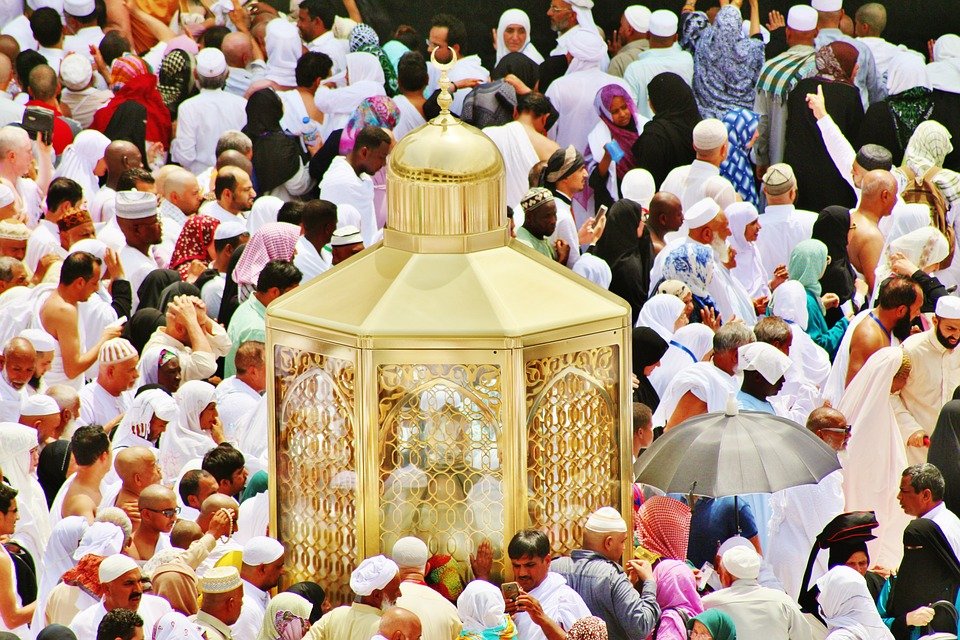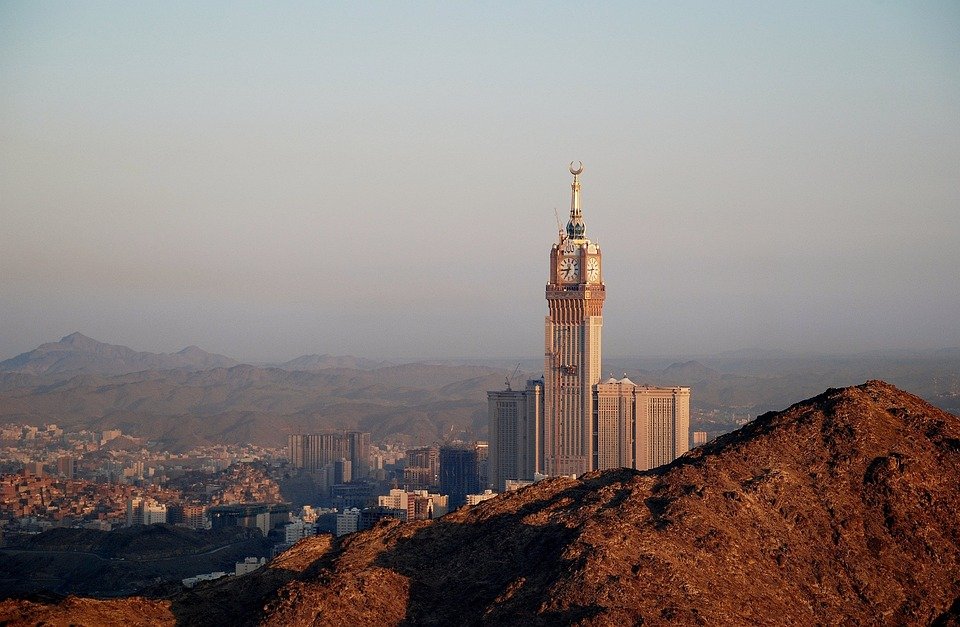You are here to read: What Is the Hajj Process: A Step-by-Step Guide for Pilgrims – A Thoughtfully Written Guide Offering Spiritual Wisdom and Travel Advice for Every Pilgrim who is going on holy journey of Hajj or Umrah.
The Hajj process is one of the most significant religious practices for Muslims worldwide. It’s a pilgrimage to the holy city of Makkah that every able Muslim must undertake at least once in their lifetime. In this article, I will provide you with a comprehensive guide on what the Hajj process entails, ensuring you have all the essential information you need. By exploring the various rituals and steps involved, I believe you will find valuable insights that will prepare you for this transformative experience. So, get ready to learn about the Hajj process and make your pilgrimage as meaningful as possible.
Understanding the importance of the Hajj process goes beyond its rituals; it represents a deep spiritual significance for millions. I feel the sense of unity and devotion that envelops pilgrims during this time is truly profound. Our expertise at Airlinkhajjandumrah.com, gained from nine years in the Umrah and Makkah, Madinah travel field since 2016, allows us to share vital knowledge on “What Is the Hajj Process: A Step-by-Step Guide for Pilgrims.” We aim to equip you with the facts and insights you need to make the most of this sacred obligation, ensuring your experience is enriching and fulfilling.
What is Hajj?
Hajj is a pilgrimage that every Muslim must complete at least once in their lifetime, if they are able to do so. This sacred journey happens every year during the Islamic month of Dhu al-Hijjah. It takes place in Makkah, Saudi Arabia, and brings people from all corners of the globe to one central location. Everyone dresses in simple white garments called ihram, which symbolizes purity and unity. This massive gathering is filled with devotion and excitement. Pilgrims come with pure hearts, eager to fulfill their spiritual duties and seek forgiveness.
Participating in Hajj is about much more than the physical acts; it’s a profound spiritual experience. As pilgrims walk, pray, and reflect, they connect deeply with their faith. The emotions can be overwhelming as they stand shoulder to shoulder with millions of others, all sharing the same goal. I believe this unity showcases the beautiful tapestry of humanity through shared beliefs and aspirations. The Hajj process is well-defined and includes several significant rituals that contribute to its meaning and importance.
The Importance of Intention
Before starting any pilgrimage, it’s vital for pilgrims to set their intentions. This means that each person must sincerely wish to complete Hajj for the sake of Allah. This deeply rooted intention turns the pilgrimage into a more personal experience. I feel that having a clear purpose helps pilgrims remain focused on their spiritual journey. It allows them to reflect on their lives, prioritize their faith, and seek inner peace.
Setting intentions also fosters a special mindset. Pilgrims usually spend time in prayer and contemplation before they arrive in Makkah. This preparation scratches the surface of what’s to come, making the experience even more fulfilling. In my opinion, a well-prepared heart leads to a more meaningful connection with Allah during this incredible time.
Entering Makkah: A Sacred Moment
As the time for Hajj arrives, pilgrims make their way to Makkah. Entering this holy city is a moment filled with awe and reverence. Upon arrival, many people recite the Talbiyah, a prayer that expresses their readiness to take part in the rituals. The excitement in the air is tangible, and it feels as though the very essence of spirituality surrounds you. I think it’s essential to soak in this moment, for it sets the tone for everything that follows.
You're at the middle of this awesome post at AirlinkHajjandUmrah.com through: What Is the Hajj Process: A Step-by-Step Guide for Pilgrims. Keep reading, it gets better!
Once in Makkah, pilgrims begin their experience by performing Tawaf, which involves walking around the Kaaba seven times. This iconic structure, draped in black cloth, stands at the heart of the Grand Mosque. As I imagine the scenes there, I feel the serenity that envelops everyone who makes this pilgrimage. The act of circling the Kaaba represents unity and the idea that all believers revolve around the same central purpose: worship.
Essential Rituals of Hajj
The Hajj process comprises several essential rituals, each with its unique significance. One of the most important acts is the standing at Arafat on the ninth day of Dhu al-Hijjah. This moment is often referred to as the pinnacle of Hajj. Pilgrims gather at the plain of Arafat, praying and asking for forgiveness. I can imagine the heartfelt cries of hope and repentance echoing across the landscape. This event lasts from midday to sunset and serves as a time for reflection and connection with Allah.
Following Arafat, pilgrims spend the night in Muzdalifah, collecting pebbles for the next day. Then comes the symbolic stoning of the devil, where they throw stones at three pillars representing Satan’s temptation. This act signifies the rejection of evil and the commitment to remain steadfast in faith. In my experience, understanding the meaning behind each ritual transforms the experience from mere action to heartfelt devotion, making it all the more impactful.
Returning to Makkah for Tawaf al-Ifadah
After completing the essential rituals, pilgrims head back to Makkah for Tawaf al-Ifadah. This ritual involves circling the Kaaba again but holds a slightly different significance. It symbolizes coming back to Allah after fulfilling the major rites of Hajj. Engaging in this act of worship expresses gratitude and reverence toward the Almighty. I find this notion of returning to a place that holds so much spiritual weight to be incredibly moving.
During Tawaf al-Ifadah, many pilgrims focus on deeper prayers and seek guidance. Some may even feel the overwhelming urge to ask for their desires and aspirations. I appreciate how Tawaf al-Ifadah encapsulates the essence of this spiritual journey: a continuous cycle of seeking, reflecting, and returning to faith. Each lap around the Kaaba fuels the desires of their hearts as they strive for a closer bond with Allah.
The Conclusion of Hajj: Eid al-Adha
As Hajj nears its end, it coincides with the celebration of Eid al-Adha. This joyous festival marks the willingness of Prophet Ibrahim (Abraham) to sacrifice his son in obedience to Allah. In remembrance of this act, pilgrims and Muslims around the world sacrifice animals and share the meat with those in need. This act reinforces the spirit of charity and community. I think this celebration beautifully connects the end of the pilgrimage with acts of kindness and generosity.
During this time, many pilgrims also partake in additional rituals, such as shaving their heads and changing out of ihram. The transition symbolizes renewal and the cleansing of past grievances. As they return to their normal lives, pilgrims carry with them not only memories but also newfound perspectives on spirituality and community. Completing Hajj becomes a transformation, a journey of deeper faith that continues long after the physical pilgrimage ends.
Reflecting on the Hajj Experience
In the end, Hajj is more than just a set of rituals; it is a profound personal experience filled with lessons and reflections. Many pilgrims describe it as a life-altering event that offers new insights into their faith and values. I believe that the teachings and revelations they gain during this time stay with them forever, guiding them on their life paths.
Every Hajj story is unique, but the shared experience of unity and devotion resonates among all who participate. The emotions, struggles, and triumphs encountered throughout the process forge an unbreakable bond among pilgrims. I feel that this unity, combined with the deep personal growth that comes from such a powerful spiritual journey, makes Hajj an extraordinary event in the lives of millions.
That wraps up What Is the Hajj Process: A Step-by-Step Guide for Pilgrims. Thanks for sticking with us till here! Share this: What Is the Hajj Process: A Step-by-Step Guide for Pilgrims with your friends.
Check our homepage at Air Link Hajj & Umrah for more awesome updates.
Some interesting posts are: 1: Umrah Mubarak, 2: When is Umrah closed 2026?, 3: When does Umrah start after Hajj 2026?
Mushu, an experienced Saudi Arabia traveler and writer, shares insightful tips and spiritual reflections to enhance Hajj and Umrah journeys for fellow pilgrims. He has been to Makkah and Madina from 2016 to 2023 many times and his posts will reflect this.







